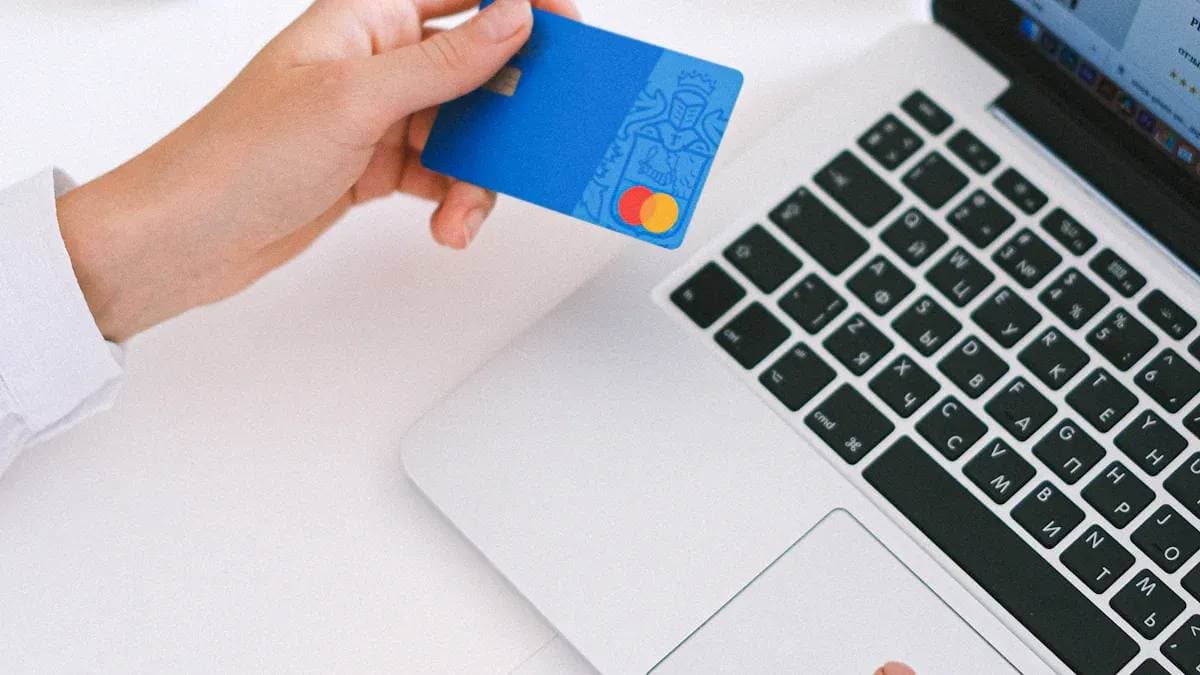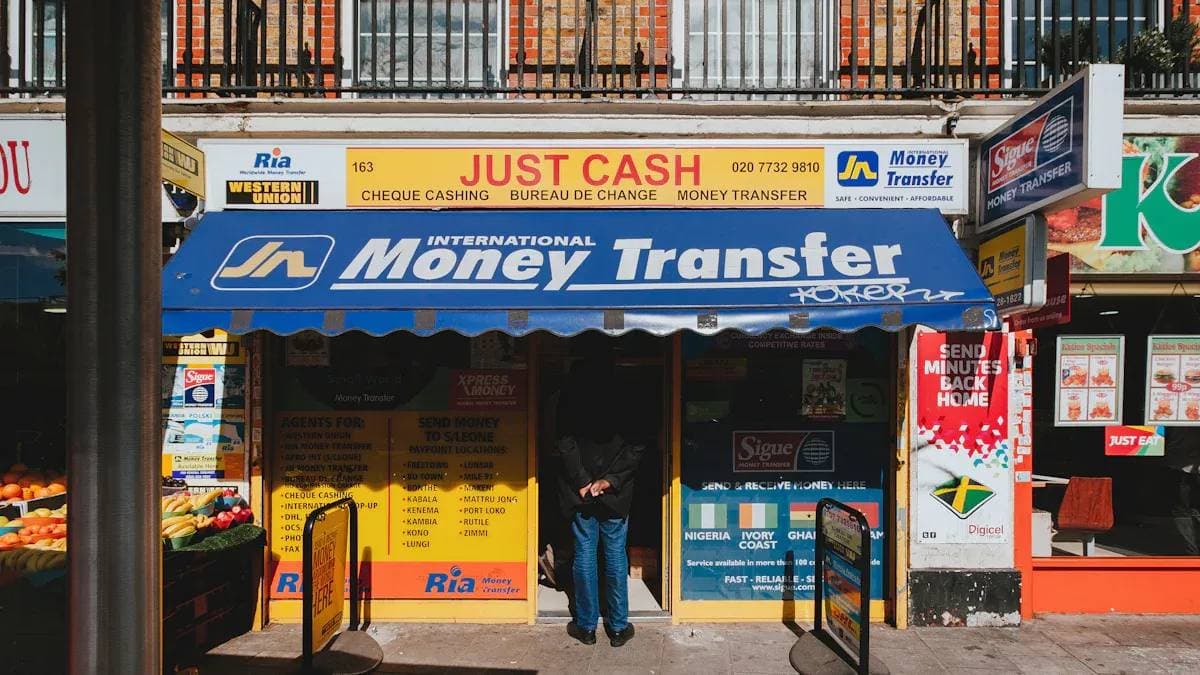- EasyCard
- Trade
- Help
- Announcement
- Academy
- SWIFT Code
- Iban Number
- Referral
- Customer Service
- Blog
- Creator
How to Add a Debit Card and Transfer Money Securely in Cash App?
This article provides a detailed introduction on how to add a debit card to a Cash App account, including tips for using prepaid cards, explanations of fees, and methods of cash withdrawal. BiyaPay can also be considered as a flexible remittance option.

Can Multiple Debit Cards Be Added to Cash App?
Adding multiple debit cards to Cash App, especially prepaid ones, is an efficient and flexible management method for users who frequently make online payments or transfer funds. However, it is impossible to connect multiple debit cards to your Cash App account at once. The same goes for linking credit cards. One Cash App account can only be used with one credit card at a time.
What you can do is replace the existing debit card with another one if needed. You can delete the previous debit card and update the app with the information of a new debit card/credit card.
You can complete it in the following way:
- Open your Cash App account.
- Then click on “My Cash” on the left side of the main screen.
- Find the bank account section and click to open it.
- Click on the menu button to find the details of the existing bank account.
- Now click to remove the card or replace it with the information of a new card.
If a user wants to change the bound debit card, they need to remove the already bound card first and then add a new debit card. In addition, Cash App provides a smooth card switching interface. Users can select or change the card they use for payment in just a few steps, avoiding the operational burden caused by frequent addition and removal.
How to Add a Debit Card to Cash App?
In fact, the operation of adding a debit card to Cash App is quite simple. Users open Cash App, click on the “Banking” tab in the lower left corner of the screen, and then select the “Add Debit Card” option. Enter the card number, expiration date, security code (CVV), and billing address in the pop-up interface to complete the binding.
The whole process does not require third-party verification, nor does it need to wait for approval. Usually, the card binding can be completed within a few seconds. After the addition is successful, the debit card will be listed in the “Linked Cards” list for easy viewing and switching at any time.
It is worth mentioning that prepaid debit cards are also within the supported range. Users can complete operations such as recharging, making payments, and withdrawing cash through these cards without having to bind a traditional bank account or a credit card. This is a very practical function for users who do not have a formal bank account.
However, it is recommended to use prepaid cards purchased on officially certified platforms to avoid the situation where the Cash App system cannot recognize or refuses to bind due to abnormal card information.
What Are the Advantages of Using a Prepaid Debit Card?
The biggest advantage of a prepaid debit card is that it is not directly linked to an individual’s bank account. Therefore, it can effectively reduce the risk of being fraudulently swiped or having privacy leaked during transactions. For users who do not want to disclose their bank information on the platform, using a prepaid card is undoubtedly a safer choice.
In addition, prepaid cards have no minimum balance limit. As long as there are available funds in the card, it can be used for payment or recharging. This mechanism of “recharge first and then use” is also very suitable for users who have the need to control their consumption, such as teenage students, temporary travelers, or people who want to set an upper limit for their expenses.
At the same time, most prepaid cards can be recharged and used repeatedly, which means that users can use them as a controllable budget account, continuously recycle them, and develop healthier financial habits. Moreover, if the card is lost, the amount of loss is limited to the balance in the card, without involving a greater risk of funds.
What Fees Will Be Incurred During the Use Process?
Although Cash App itself does not charge fees for remittance and receipt of money, when it comes to debit cards, especially prepaid cards, some operations may still incur handling fees:
- When using a debit card to recharge a Cash App account, the platform usually charges a 3% handling fee;
- When withdrawing cash through an ATM, a fixed handling fee of $2 needs to be paid;
- If the “Instant Cash Out” function is selected to transfer the balance to a debit card, Cash App will charge a fee of 1.5%, with a minimum of $0.25;
- In contrast, the standard cash out is free, but it usually takes 1-3 working days for the money to arrive.
Users should clearly check the terms of the bound debit card before the operation. Some cards themselves may also charge certain service fees or recharging handling fees. Therefore, before using Cash App for transfer, understanding all possible fees can avoid unnecessary losses.
If you want to save costs, you can choose to bind a card that does not charge handling fees, or use the standard cash out method to reduce the overall transfer cost.
Is the Speed of Recharging a Prepaid Card to the Cash App Balance Fast?
Generally speaking, the speed of recharging a Cash App account using a debit card or a prepaid card is very fast. Most transactions can be credited to the account within a few minutes, which benefits from Cash App’s support for real-time transactions and the efficiency of the system processing.
However, the specific arrival time may also fluctuate slightly due to the processing situation of the platform, the feedback speed of the bank, and the network condition. In some cases, binding a new card for the first time or a large recharging operation may trigger the platform’s security review mechanism, delaying the arrival time of the money.
In addition, if the “Instant Cash Out” function is selected to transfer the balance to a debit card, although an additional fee is required, the funds can usually arrive within a few seconds, greatly improving the efficiency of fund turnover. This function is especially practical for users who need to make emergency payments or withdraw cash in an emergency.
If you are not in a hurry for the money to arrive, you can also choose the “Standard Cash Out”. Although it takes 1-3 working days to wait, it is completely free and is suitable for users who do not have high requirements for time.
How to Use a Debit Card to Transfer Money Securely in Cash App?
After binding a debit card, users can easily recharge from the card to the Cash App account or perform the reverse operation of transferring the balance from the account to the card. All operation interfaces are encrypted and require account identity verification, including methods such as verification codes, fingerprints, and facial recognition, to ensure account security.
However, users still need to pay attention to several operation details:
- Do not disclose the debit card binding information or verification code to others;
- Try to avoid transfer or account login operations in a public network environment;
- When encountering account abnormalities (such as abnormal login, abnormal outflow of funds), contact the Cash App customer service immediately to freeze the account and troubleshoot the problem;
- Check the consumption records of the bound card every month to confirm whether there are any abnormal consumption behaviors.
Through these detailed operations, the security of personal accounts and funds can be maximally guaranteed.
Conclusion
As the main payment and cash withdrawal method for Cash App accounts, debit cards provide a flexible and efficient fund operation experience. The features of supporting the binding of prepaid cards, real-time arrival of funds, and cost control enable users to more easily achieve independent management of funds in daily life.
If you pursue a wider range of fund transfer options, higher limits, and a faster remittance experience, BiyaPay will be another trustworthy choice. It supports remittance to most countries and regions around the world, has no limit on the amount, and adopts the most efficient and secure “local remittance” method, making it a great helper for cross-platform fund circulation.
*This article is provided for general information purposes and does not constitute legal, tax or other professional advice from BiyaPay or its subsidiaries and its affiliates, and it is not intended as a substitute for obtaining advice from a financial advisor or any other professional.
We make no representations, warranties or warranties, express or implied, as to the accuracy, completeness or timeliness of the contents of this publication.




Contact Us
Company and Team
BiyaPay Products
Customer Services
is a broker-dealer registered with the U.S. Securities and Exchange Commission (SEC) (No.: 802-127417), member of the Financial Industry Regulatory Authority (FINRA) (CRD: 325027), member of the Securities Investor Protection Corporation (SIPC), and regulated by FINRA and SEC.
registered with the US Financial Crimes Enforcement Network (FinCEN), as a Money Services Business (MSB), registration number: 31000218637349, and regulated by FinCEN.
registered as Financial Service Provider (FSP number: FSP1007221) in New Zealand, and is a member of the Financial Dispute Resolution Scheme, a New Zealand independent dispute resolution service provider.




















